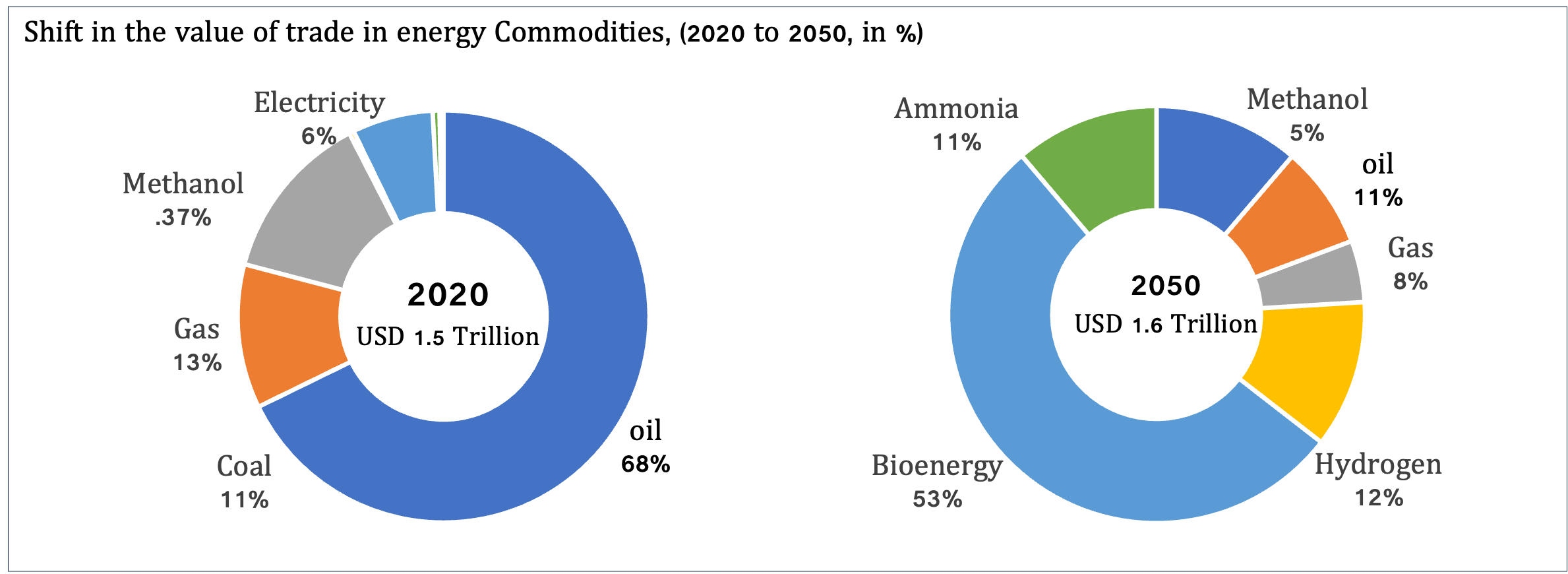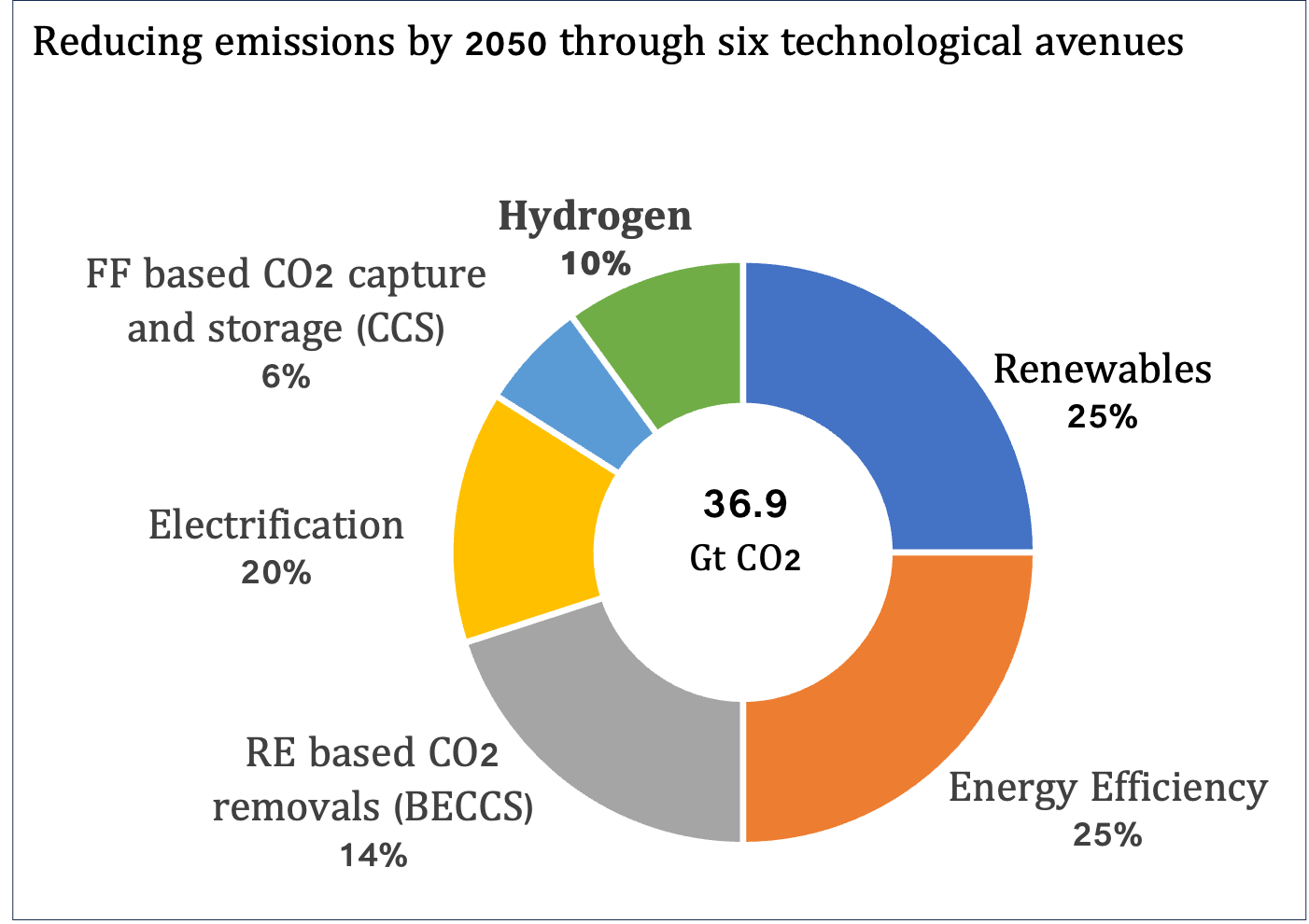In 2021, only 0.5 GW of electrolysers were installed; cumulative installed capacity needs to grow to some 350 GW by 2030. Hydrogen commands a great deal of policy attention, so the coming years should bring concrete actions to develop the global market and reduce costs. In this regard, the development of standards and guarantees of origin, along with support schemes to cover the cost gap for green solutions, will ensure that hydrogen offers a meaningful contribution to climate efforts in the long term
Green hydrogen should move from niche to mainstream by 2050. 80% of the world population lives in countries that are net energy importers. With the abundance of renewable and hydrogen potential yet to be harnessed, this percentage can be dramatically reduced

Electrification and efficiency as key drivers of the energy transition, enabled by renewables, hydrogen, and sustainable biomass. The massive change in how societies produce and consume energy, would result in a cut of nearly 37 gigatonnes of annual CO2 emissions by 2050
These reductions can be achieved through
1)significant increases in generation and direct uses of renewables-based electricity
2)substantial improvements in energy efficiency
3)the electrification of end-use sectors (e.g. Electric vehicles and heat pumps)
4)clean hydrogen and its derivatives
5)bioenergy coupled with carbon capture and storage; and 6) last-mile use of carbon capture and storage
Progress will depend on political will, well-targeted investments, and a mix of technologies, accompanied by policy packages to put them in place and optimize their socio- economic impact
